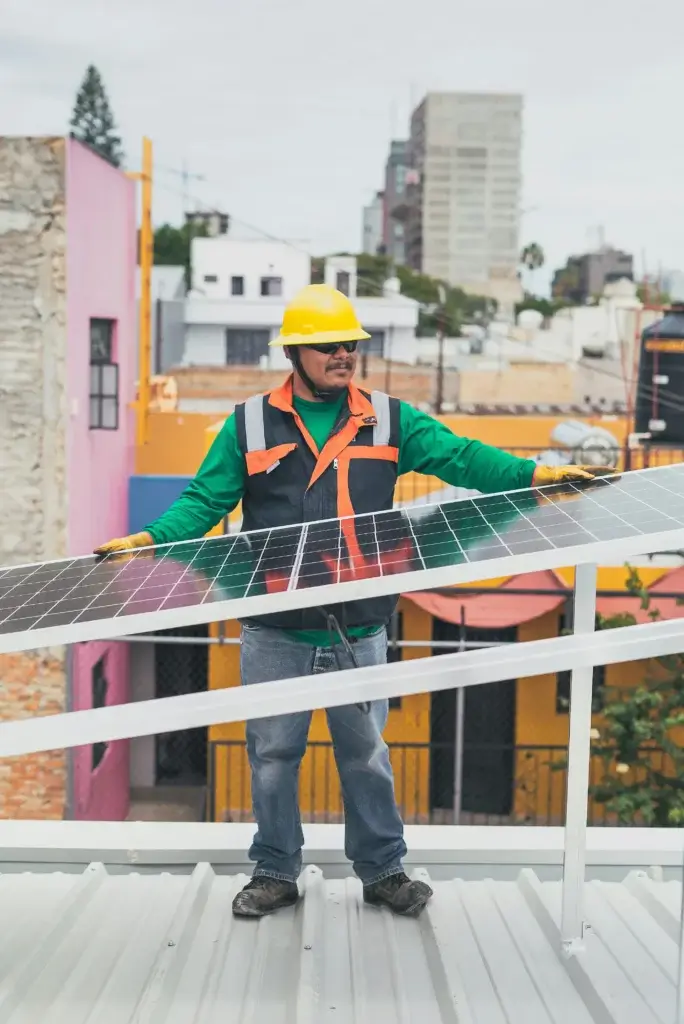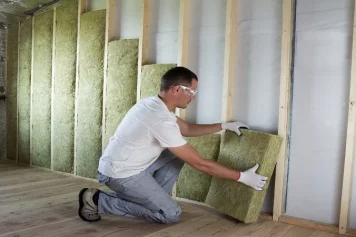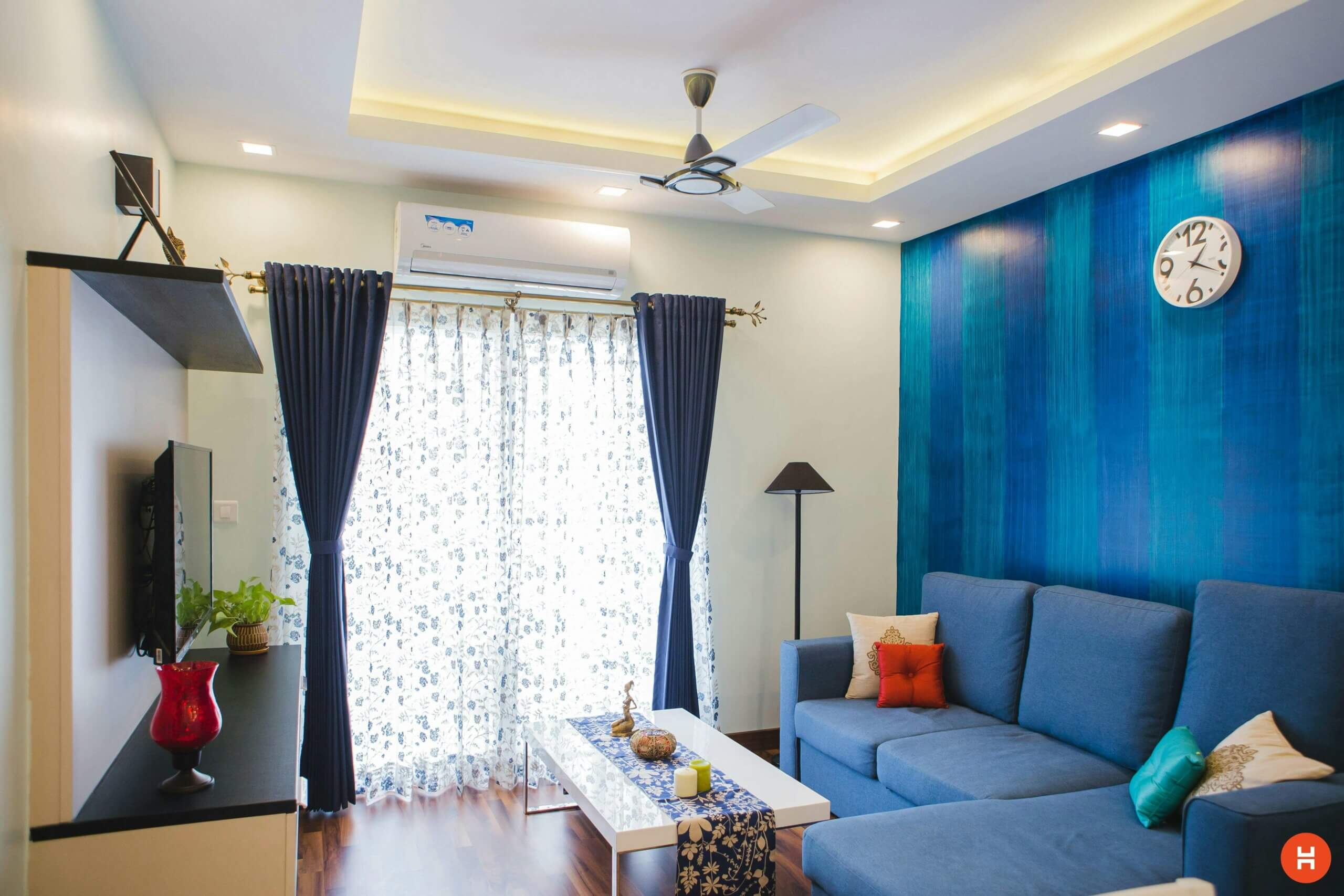Tax-deductible work on your primary residence allows you to benefit from tax reductions . These investments concern specific work, such as energy renovations or adaptations for disabilities. They help you reduce your tax burden while improving the comfort and value of your home .
Are you planning to renovate your primary residence ? Good news: some renovations can save you money on your taxes ! Indeed, the government encourages energy renovations and the adaptation of housing for people with reduced mobility by offering advantageous tax incentives.
Thanks to these measures, you can benefit from a tax credit , a tax reduction , or even a deduction from your property income . But what work is involved? What are the limits and conditions to be met? This article guides you step by step to understand the intricacies of tax exemption related to renovation work.
Together we’ll look at what work you can do to benefit from tax breaks, how to calculate your savings , and what steps to take advantage of them!

What is tax-deductible work for your primary residence?
Eligible energy renovation work
Energy-efficient renovations to your primary residence offer exceptional tax opportunities. The work can allow you to benefit from substantial tax credits. Here’s a summary table of the main eligible projects:
Type of work | Tax credit | Conditions |
Thermal insulation of attics | Up to 75% | High-performance insulation |
Window replacement | 30-35 % | High-performance joinery |
Installation of high-performance boiler | 25-40 % | Strict energy criteria |
Photovoltaic panels | Variable | Power and installation compliant |
Heat pump | 30-40 % | High energy efficiency |
Focus on thermal insulation
Insulation is the heart of energy renovation work. Several techniques are tax-deductible:
▪️ wall insulation,
▪️ attic insulation,
▪️ insulation of lower floors.
Eligibility criteria
To benefit from the energy transition tax credit , several conditions apply:
▪️ work carried out by a certified professional, such as Reno , your architectural firm,
▪️ materials meeting precise standards,
▪️ accommodation over 2 years old,
▪️ work in the main residence.
Accessibility and disability adaptation work
Home adaptation work for people with reduced autonomy also offers significant tax benefits.
Type d’adaptation | Tax deduction | Objective |
Walk-in shower installation | Up to 50% | Accessibility |
Widening the doors | Specific tax credit | Mobility |
Installation of ramps | Tax reduction | Security |
Home automation equipment | Partial deduction | Autonomy |
Specific conditions:
▪️ work related to loss of autonomy,
▪️ necessary medical documents,
▪️ detailed quotes required,
▪️ adaptation of the main residence.
Other work eligible for tax deductions
Several other types of work may be partially deductible:
Category | Type of work | Possible deduction |
Upgrading to standards | Electricity | Tax reduction |
Security | Alarm installation | Tax credit |
Parties communes | Deduction on property income | |
Historical monuments | Restoration | Specific tax deduction |
Important recommendations
▪️ keep all supporting documents;
▪️ check the precise conditions;
▪️ consult a tax expert;
▪️ declare the work carried out.
Every euro invested can potentially become a tax saving . The key lies in careful planning and a clear understanding of existing systems.

How to benefit from tax reductions for your work ?
Current tax arrangements
To benefit from tax reductions during renovation work, several tax schemes exist. The most well-known are:
▪️ the tax credit for energy transition (CITE): this system allows you to recover part of the expenses incurred for work to improve the energy performance of your main residence.
▪️ MaPrimeRénov’: This financial aid is provided subject to means-tested conditions and can be combined with the CITE (Citizenship Allowance for Renovation). It covers a wide range of energy renovation projects.
▪️ tax reduction for disabled people: if you adapt your home for a person with reduced mobility, you can benefit from a tax reduction.
Tax system | Works concerned | Eligibility requirements |
CITE | Insulation, heating, ventilation, etc. | Main residence, work carried out by a professional |
MaPrimeRénov’ | Energy renovation work | Main residence, resource conditions |
Tax reduction for disabled people | Housing adaptation | Person with reduced mobility living in the accommodation |
Deduction conditions and ceilings
Eligibility requirements and deduction limits vary depending on the tax system and the work carried out. It is therefore essential to obtain specific information from your tax office or a specialist advisor.
Some general criteria to take into account:
▪️ Nature of the work: only certain types of work are eligible (insulation, heating, adaptation for disabled people, etc.).
▪️ Date of completion of the work: the work must have been carried out after a certain date.
▪️ Main residence: the work must be carried out in your main residence.
▪️ Supporting documents: you must keep all invoices, quotes and completion certificates to justify your expenses.
Procedure for declaring work
To benefit from tax reductions, you must declare your work when you file your tax return.
The steps to follow are generally as follows:
▪️ Keep all supporting documents: invoices, quotes , completion certificates.
▪️ Complete the income tax return form: indicate the amount of expenses incurred and attach supporting documents.
▪️ Consult the explanatory note: each year, the explanatory note for the income tax return specifies the procedures for declaring work.
In short, benefiting from tax breaks for your renovations requires meeting certain conditions and following a specific procedure. Don’t hesitate to seek professional assistance if you have any doubts.
How to calculate the amount of your tax reduction on work?
The calculation of your tax reduction for your renovation work is generally a percentage of the total amount of expenses incurred, within the limits set by law.
▪️ Example 1: for a 25% tax credit, on work worth €10,000, you will benefit from a tax reduction of €2,500.
▪️ Example 2: for a deduction from your property income, the deductible amount is generally equal to half of the work expenses incurred during the year.
Simulation of your savings
To estimate the exact amount of your savings, it is recommended to use an online simulator or contact a tax advisor . Many free tools are available on tax websites or organizations specializing in energy renovation.
Pitfalls to avoid
▪️ Common mistakes: The most common mistakes are failure to comply with spending limits, lack of supporting documents, or choosing ineligible equipment.
▪️ Conditions not met: Make sure you meet all eligibility conditions to benefit from aid.
▪️ Risks of tax adjustment: in the event of a tax audit, an adjustment may be issued if the supporting documents are not compliant or if the work has not been carried out in accordance with best practice.

What steps should you take to benefit from it and avoid unpleasant surprises ?
To take full advantage of the tax benefits associated with your renovation work , it is essential to put together a complete and accurate file. Here are the main steps to follow:
Stage | Tasks |
1. Choose the right jobs | – Choose work eligible for current tax measures ( tax credit , tax reduction ). – Prioritize energy renovation (insulation, heating, etc.) and adapting your home in the event of loss of autonomy . |
2. Have detailed quotes drawn up | – Request several quotes from different professionals to compare renovation prices and services. – Make sure that the quotes clearly state the work carried out, the materials used and the deadlines for completion. |
3. Keep all supporting documents | – Keep all invoices, contracts, completion certificates, and any certificates of conformity in a safe place. These documents will be essential for supporting your expenses when filing your tax return. |
4. Declare the work | – Indicate the work carried out and the amounts spent in your tax return. – Attach the supporting documents requested by the tax authorities. |
Tax adjustment risks to avoid
To avoid any inconvenience during the tax audit, it is important to follow certain rules:
▪️ eligible work: make sure that the work carried out is that mentioned in the tax schemes to which you wish to apply;
▪️ supporting documents: keep all supporting documents for the legal limitation period (generally 6 years);
▪️ deadlines: respect the deadlines to declare your work and benefit from tax reductions;
▪️ ceilings: do not exceed the spending ceilings set by the various systems.
In summary , to benefit from the tax advantages associated with your renovation work, it is essential to prepare your file well, keep all supporting documents and comply with the rules in force. If in doubt, do not hesitate to seek the advice of a professional (accountant, tax advisor).
What are the legal aspects related to tax-deductible work on a primary residence?
Ten-year guarantee
This mandatory guarantee covers construction defects which affect the solidity of the work or which make it unfit for its intended purpose for 10 years.
Two-year guarantee
This guarantee covers defects in conformity and visible defects for two years.
Building damage insurance
This insurance is taken out by the project owner to protect themselves in the event of a disaster during construction.
Construction contract
The construction contract must be clear and precise, detailing the work to be carried out, deadlines, payment terms, etc.
Urban planning rules
Before starting work, it is important to check whether a building permit or prior declaration is required.
Civil liability
In the event of damage caused to a third party during the work, the construction company may be held liable.







